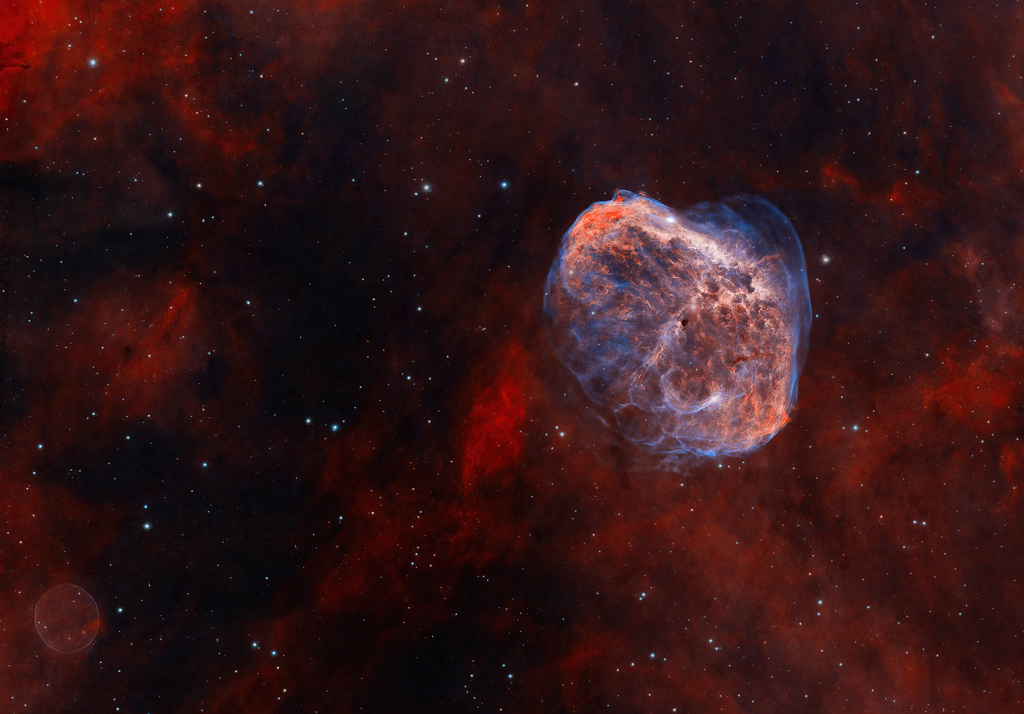2020年10月17日
Cygnus: Bubble and Crescent
Image Credit & Copyright: Wissam Ayoub
Explanation: These clouds of gas and dust drift through rich star fields along the plane of our Milky Way Galaxy toward the high flying constellation Cygnus. Caught within the telescopic field of view are the Soap Bubble (lower left) and the Crescent Nebula (upper right). Both were formed at a final phase in the life of a star. Also known as NGC 6888, the Crescent was shaped as its bright, central massive Wolf-Rayet star, WR 136, shed its outer envelope in a strong stellar wind. Burning through fuel at a prodigious rate, WR 136 is near the end of a short life that should finish in a spectacular supernova explosion. Discovered in 2013, the Soap Bubble Nebula is likely a planetary nebula, the final shroud of a lower mass, long-lived, sun-like star destined to become a slowly cooling white dwarf. Both stellar shrouds are 5,000 light-years or so distant. The larger Crescent Nebula is around 25 light-years across.
Tomorrow’s picture: pretty wild …
天鹅座的皂泡与眉月星云
影像提供与版权: Wissam Ayoub
说明: 这二团气体与尘埃云,漂流在银河盘面天鹅座方向的富星野里。位在望远镜影像视野里的皂泡星云(左下)及眉月星云(右上),都是由处在最终演化阶段的恒星产生的。其中,又名为NGC 6888的眉月星云,是由位在其中心的明亮大质量沃夫-瑞叶型恒星(WR 136),用强烈恒星风推出它的外层气壳后形成的。以惊人速率消耗核燃料的WR 136,处在它短暂生命的终点附近,最后会以壮观的超新星爆炸谢幕。而 2013年才发现的皂泡星云,很可能是个行星状星云;它是一颗注定会变成逐渐冷却白矮星的长寿、小质量类太阳恒星,所抛出之气体寿衣。这二个天体的距离都在5,000光年上下,较庞大的眉月星云则宽约25光年。
明日的图片: pretty wild …







